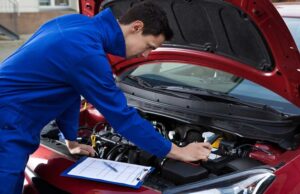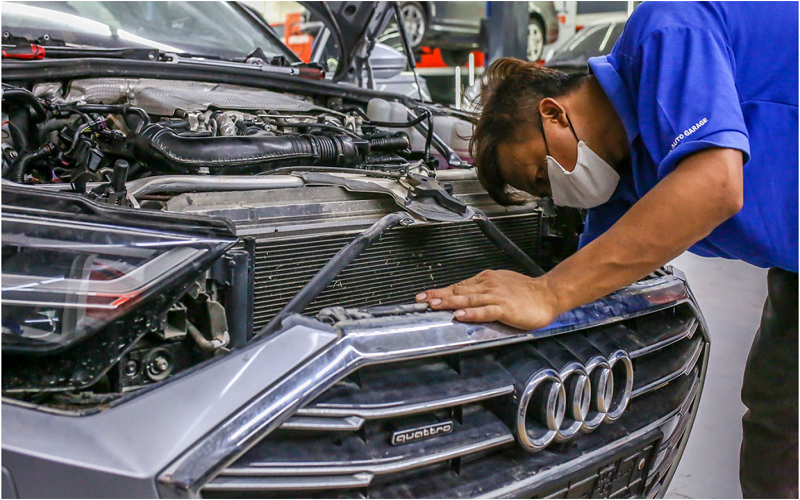For most people, it’s always better to spend your money on a new TV than on a mattress. The first, in addition to allowing us to teach ourselves and have a good time, reigns supreme in the living room. The second will bring us rest and serenity but admit that it is less tempting to invest several hundred dollars when you know that it will remain hidden under the sheets!
Belts: the logical step for good maintenance
Drain the oil: temperature variations and prolonged idling have the effect of reducing the efficiency of the engine oil. It is true that synthetic oils are more resistant to extreme cold and oxidize less, but that does not mean that they last longer than conventional oil. Every spring, it is important to drain the oil and replace it with a
Replace the oil filter at each oil change: it would be frowned upon to take a shower and put on dirty clothes. It’s the same if you replace the engine oil without installing a new, clean filter. It is true that some manufacturers allow the filter to be replaced at every two oil changes, but this saves a lot of money, since the filter costs little and provides better protection for your engine.
Replace coolant as needed: Many motorists refuse to listen to their mechanic and replace coolant at certain intervals. According to them, it is only a trick to make them spend. However, there is more than the fluid level that is important. The coolant loses its efficiency and oxidizes over the months and seasons. Given that it plays a crucial
Check the drive belts: just take a look at the serpentine belt which is responsible for running most of the engine accessories to realize that it will be impossible to replace it in open country or on the side of a highway. While it used to be a simple and routine operation, its replacement requires special tools and the benefit of a workshop. Therefore, it is essential to have all drive belts checked at least once a year. And speaking of the belt, don’t forget to have the toothed belt actuating the camshaft replaced at the mileage recommended by the manufacturer.
Spark plugs, those great forgotten ones: with the use of spark plugs whose duration exceeds 130,000 km, it is easy to forget them. First of all, even if your car has few kilometers on the odometer, it is important to have the spark plugs checked each season and replaced if necessary. And if everything is fine, you will only have to replace them after driving more than 100,000 km. But regular checking is inexpensive and can prevent a lot of trouble. Corroded spark plugs will have a negative effect on engine performance and fuel consumption.
Under the vehicle, a section not to be overlooked
It is important to note that a spring tune-up is not limited to cleaning the body and the cabin in addition to draining the oil and replacing the filter. An element too often neglected is that of the suspension, the brakes and the muffler, in short everything that is found under the vehicle. Surely a car purchased last November has seen little wear and tear come spring. On the other hand, if your vehicle has had more than two winters under its wheels, it is important to check all the suspension, brakes and exhaust components.
Given the deplorable state of our roads, the shock absorbers are put to the test. Worn shock absorbers have negative effects on comfort, handling and braking. With worn shock absorbers, the car nose dives under braking causing the weight ratio to become unbalanced and the stopping distance to be longer. Without good wheel control, grip is less good, the car hops on bad roads and the steering is less precise. In addition, it causes premature tire wear. And even if the springs have longer life than the shock absorbers, it is also possible that they need to be replaced.
The 10 rules of spring washing
After the hellish winter we’ve been through, your vehicle definitely needs a thorough cleaning. It is not only necessary to remove the dirt and salt adhering to the bodywork sheets, but also to clean the passenger compartment and carry out a thorough inspection of the condition of the bodywork, insulating rubbers and any decorative parts.
And it is not necessary to resort to complex tools to carry out this great cleaning of the spring. It takes patience, arm grease and some basic tools. Here is the 10-step plan of attack for your spring cleaning.
You must first clean the passenger compartment and the luggage compartment. The vacuum cleaner will remove food seeds, dust and debris of all kinds. The front and rear floor, the luggage compartment, under the seats, in the storage compartments, you have to go everywhere. Afterwards, shake the carpets, loosen them if they have been soiled and use a special shampoo to dislodge salt stains. An old toothbrush and cotton swabs are effective tools for the corners.
It is important to use a soap specially designed for cars. Avoid dishwashing detergents that are too strong and remove all protection.
A basic rule that many ignore: never wash your car in direct sunlight. The thermal shock between the water and the hot sheets is harmful to the paint.
A high-pressure washer allows you to use less water and wash thoroughly. It is recommended for very dirty cars.
Once the bodywork has been rid of its dirt, use a boiler filled with lukewarm soapy water. Pass the sponge soaked in water everywhere, rinsing it frequently. Clean the bumpers last.
Wash the underside of the car and the wheel wells with a powerful jet of water to dislodge mud and salt.
Afterwards, rinse the whole car without leaving any trace of soap.
Wipe the vehicle with a quality chamois or a soft cloth, wringing it out frequently. If you can afford it, a wringer, like the Tor-Do model, makes the job much more enjoyable.
Once the car has been polished, it is the turn of the windows and mirrors. A soft cloth will remove dirt without scratching the windows, provided you have sprayed a cleaning liquid before. A terry towel works wonders.
Finally, if possible, avoid going to automatic car washes on busy days. They recycle some of the water used and the water jets for the brushes may damage your vehicle. In periods of low traffic, their use is safe and in addition they wash the underside of the vehicle.
And the rest! Once your car is as clean as new, it’s time to carefully check the finish of the bodywork for scratches and paint chips. Most of the time, a touch-up kit sold by your dealer or at a big box store will be enough to repair the damage. Of course, the place to be repaired must be dry and clean. Of course, if the damage is more extensive, visit a body shop. And we must not let things drag on because the damage will increase and the costs increase. While you’re at it, take a few minutes to lubricate the locks and hinges. Check the owner’s manual for the recommended lock lubricant. Some require a graphite lubricant, some don’t. Finally, door and trunk rubbers should be repaired or replaced if worn. Several specialists recommend spraying them with a silicone solution to make the water bead on their surface. One last check to contemplate your work: take a look under the car to detect any trace of rust, corroded parts. This is an opportunity to check the condition of the brake lines, the condition of the muffler and any other mechanical element that may have been damaged during the winter.


